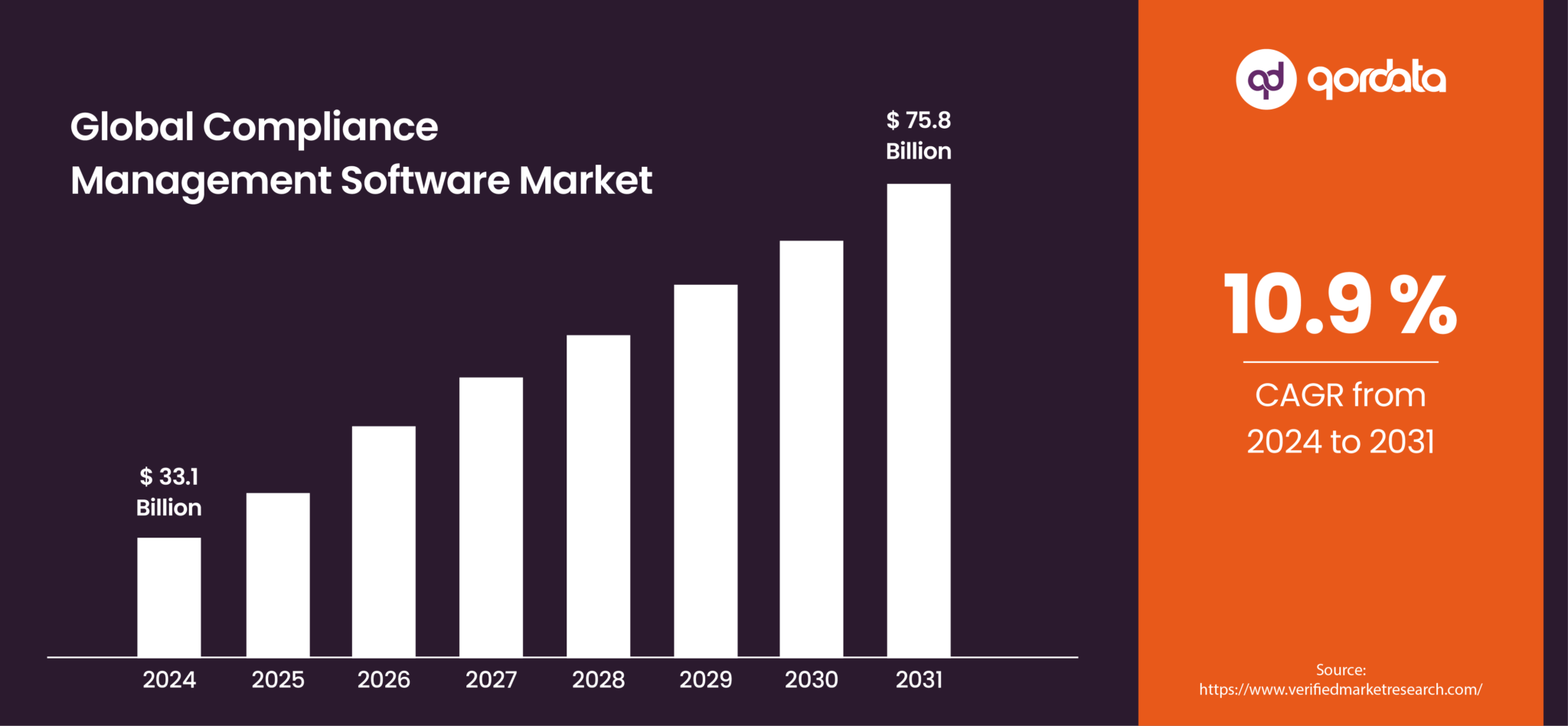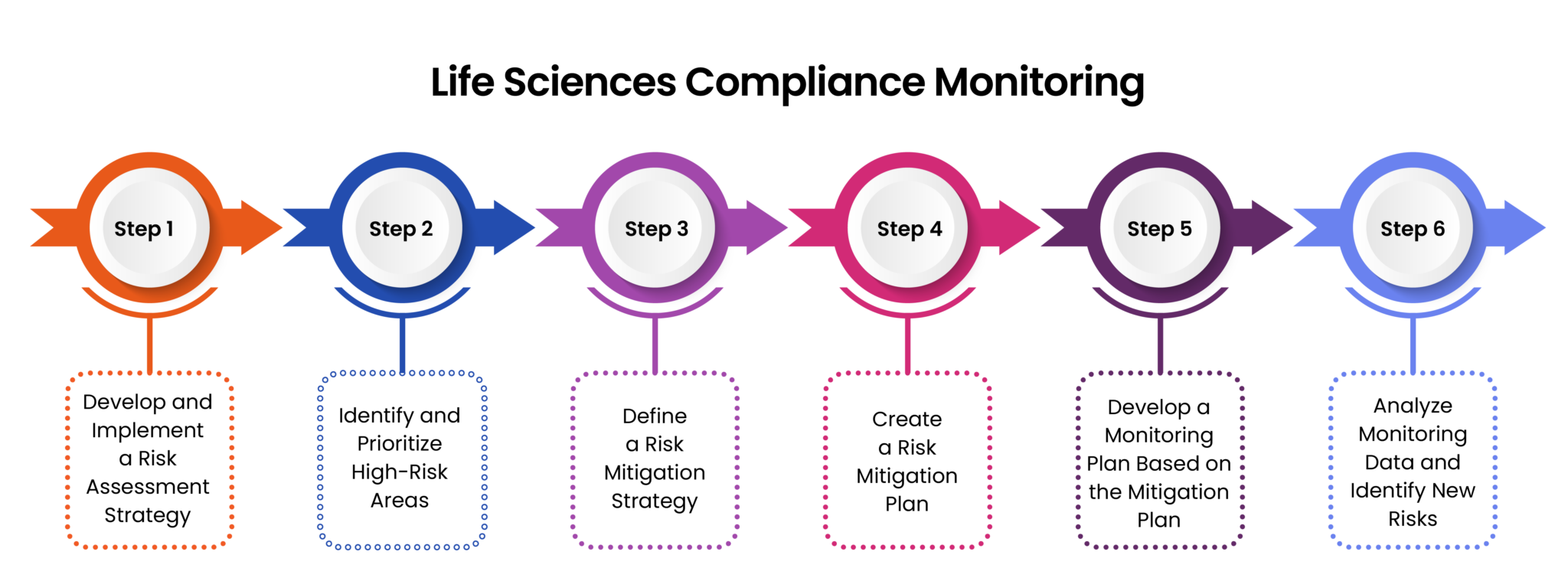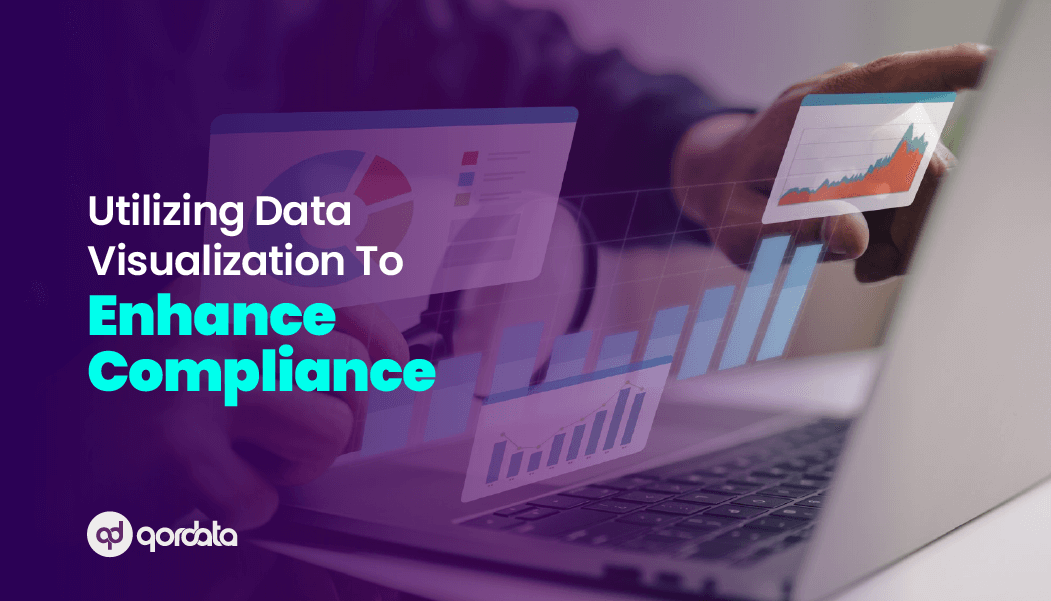With 2025 approaching, it’s time to re-evaluate and optimize your compliance monitoring workflows to stay ahead of the curve.
The Compliance Management Software market was valued at USD 33.1 billion in 2024 and is anticipated to grow to USD 75.8 billion by 2031, reflecting a compound annual growth rate (CAGR) of 10.9% during the period from 2024 to 2031.
With advancements in automation, real-time data analysis, and sophisticated software, companies now have powerful tools to help streamline compliance and mitigate compliance risks.
This guide provides a comprehensive overview of implementing a robust compliance monitoring workflow in 2025, using a structured, automated approach that can scale with your organization’s needs.
How to Automate Compliance Workflows?
To efficiently manage compliance in 2025, it’s essential to prioritize automation. Automating compliance workflows can reduce human error, enhance data accuracy, and save time.
With advanced compliance workflow software, life sciences companies can map out compliance workflows that integrate data, standardize processes, and automate previously manual tasks. Automated workflows reduce the risk of oversight, keep all stakeholders in sync, and provide real-time compliance insights.
How Does Compliance Workflow Software Work?
Compliance workflow software is designed to streamline and automate the complex processes involved in monitoring and managing compliance activities within life sciences companies. Utilizing advanced technologies such as Artificial Intelligence (AI), OCR (Optical Character Recognition), Computer Vision, Data Sciences, and Machine Learning, this software allows compliance teams to identify, analyze, and address compliance risks efficiently.
The compliance workflow software works by creating a unified interface where teams can monitor compliance-related activities in real-time, assess risk factors, and oversee compliance measures across departments. With these capabilities, it simplifies the workflow for tracking, analyzing, and managing compliance initiatives, helping organizations ensure that compliance tasks are accurately managed and regularly updated to mitigate potential risks.
Key Features of Compliance Workflow Software
For life sciences companies, software like qordata’s solution includes the following key features:
- AI-Driven Risk Identification: Uses AI to automatically identify key risk areas, individuals, and activities across the organization, allowing teams to proactively target high-risk areas.
- Customizable Monitoring Plans: Provides configuration tools to design and track a compliance monitoring plan tailored to the specific needs and risks of the organization.
- Automated T&E and Expense Auditing: Audits 100% of expense reports, including T&E (Travel & Entertainment) and sign-in sheets, within minutes, significantly reducing the time needed for manual review.
- Real-Time Compliance Tracking: Enables live monitoring and analytics for comprehensive oversight of compliance activities and ensures that necessary adjustments can be made swiftly.
- Risk Remediation Tracking: Tracks and manages remedial actions in response to compliance issues, allowing for timely resolution and ongoing compliance improvement.
- State-Based Monitoring: Enables customized monitoring and remediation actions based on specific state regulations, making it easier to meet region-specific compliance requirements.
- Unified Analytics Interface: Consolidates all risk indicators and monitoring activities in a single interface, facilitating better visibility, analysis, and decision-making across compliance teams.
Steps to Implement a Compliance Monitoring Workflow
-
Develop and Implement Your Risk Assessment Strategy
Start by defining your risk assessment process and approach, identifying key stakeholders and team members across compliance, legal, and operations. Evaluate and prioritize risks based on regulatory requirements and internal standards. Acquire necessary resources and technology, and consider whether an external service provider may add value. Identify which aspects of the workflow can be effectively automated, focusing on areas like routine audits, documentation, and reporting.
-
Identify and Prioritize High-Risk Areas
Assess your organization’s current compliance maturity, considering growth goals and existing workflow capabilities. Define the scope of risk identification (e.g., geographic regions, divisions, or functions) and prioritize based on the potential impact. This will allow you to focus your efforts on high-impact areas within the organization’s risk tolerance.
-
Define Your Risk Mitigation Strategy
For each identified risk, determine whether the company will accept, transfer, avoid, or mitigate it. Assign a dedicated risk owner to ensure accountability, and develop specific actions to address each risk. Your mitigation strategy should include corrective and preventive actions (CAPA) and should involve relevant partnerships across the organization for effective implementation.
-
Create a Risk Mitigation Plan
Specify the activities associated with each key risk, identifying which regions and business functions are involved. Review existing policies to determine relevance and fill any procedural gaps. Assign owners and set deadlines for completing each activity in the mitigation plan, and establish a reporting protocol so that all relevant stakeholders receive timely updates on compliance status.
-
Develop a Monitoring Plan Based on the Mitigation Plan
Based on your mitigation plan, outline monitoring activities such as live monitoring, desktop monitoring, or auditing. Identify necessary resources and partnerships, and set up a process for analyzing monitoring data to measure mitigation effectiveness. Define reporting requirements and establish analytics that will highlight compliance insights and track the effectiveness of your workflows.
-
Analyze Monitoring Data and Identify New Risks
Review monitoring data regularly to assess the effectiveness of mitigation activities, looking at key metrics that indicate whether risks are well-managed. Identify trends or outliers that could signal emerging risks or areas requiring attention. Schedule routine analysis of monitoring data, making adjustments as necessary to adapt to new regulatory requirements or changes in the compliance landscape.
Best Practices for Compliance Workflow Automation in 2025
When implementing compliance workflow automation, some best practices to consider include:
- Utilize AI and Machine Learning: Advanced compliance monitoring systems now integrate AI to automate routine processes, identify high-risk areas, and provide predictive insights.
- Prioritize Data Security: Automating compliance workflows often requires handling sensitive data, making it essential to adhere to the latest data protection standards.
- Conduct Regular Training: Ensure all employees understand automated compliance systems and are aware of changes in the compliance process.
- Choose Scalable Solutions: Select a solution that can grow alongside your organization, adapting to new compliance requirements and supporting international operations if needed.
Conclusion
Implementing an effective compliance monitoring workflow in 2025 means blending strategic planning with cutting-edge technology. Automating compliance workflows provides a more efficient way to manage risks, ensure adherence to regulatory requirements, and create a culture of transparency and accountability. As compliance standards continue to evolve, life sciences organizations that proactively adopt workflow automation will be well-positioned to meet future challenges head-on.
Other Relevant Reads:





